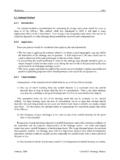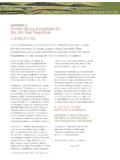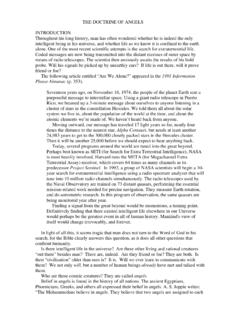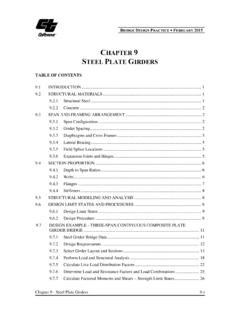Transcription of STUDY MATERIAL - Chakeri
1 STUDY MATERIAL SUBJECT : MATHEMATICS CLASS X KENDRIYA VIDYALAYA SANGATHAN REGIONAL OFFICE PATNA YEAR 2012-13 PREFACE In compliance to kVS(HQ), New Delhi letter (SM)/2012-13 KVSPR/ dated the responsibility of preparation of STUDY / Support MATERIAL class X mathematics has been entrusted to this Region KVS Patna Region acknowledges the sincere efforts of Sh. Sudhakar Singh, Principal, KV Gaya, Gupta, PGT(Maths), Dr. , TGT(Maths), Sh. , TGT(Maths) and Sh. , PGT( ). I am confident that the STUDY /support MATERIAL class x mathematics will directly help the students to understand the concept well and meet quality expectation. Wish you all the best. ( ..) Dy. Commissioner STUDY MATERIAL MATHEMATICS FOR CLASS X (2012-2013) PATRON DY.
2 COMMISSIONER COORDINATOR SH. SUDHAKAR SINGH PRINCIPAL, KV GAYA RESOURCE PERSONS MS. ARCHITA GUPTA, PGT(MATHS), KV GAYA DR. , TGT(MATHS), KV GAYA SH. , TGT(MATHS), KV GAYA SH. , PGT( ), KV GAYA SH. SUDHAKAR SINGH, PRINCIPAL, KV GAYA How to use this STUDY MATERIAL ? Dear Children, This STUDY MATERIAL contains gist of the topics/units along with the assignments for self assessment. Here are some tips to use this STUDY MATERIAL while revision during pre-boards and finally in board examination. Go through the syllabus given in the beginning. Identify the units carrying more weightage. Suggestive blue print and design of question paper is a guideline for you to have clear picture about the form of the question paper.
3 Revise each of the topics/ units and attempt the questions given for self assessment. After attempting the self assessment part, consult the question bank where questions carrying one, two , three, four marks are given. Revise them. After revision of all the units, solve the sample paper, and do self assessment with the value points. Must STUDY the marking scheme/solution for CBSE previous year paper which will enable you to know the coverage of content under different questions. Underline or highlight key ideas to have birds eye view of all the units at the time of examination. Write down your own notes and make summaries with the help of this STUDY MATERIAL . Turn the theoretical information into outline mind maps.
4 Make a separate revision note book for diagrams and numericals as well. Discuss your DOUBTS with your teacher/other students. Use part2 for FA-2 and FA-4 Important: Slow learners may revise the knowledge part first. Bright students may emphasize the application part of the question paper. INDEX SLNO TOPIC PAGE NO. PART -1 SA-1 1 Real Numbers 2 Polynomials 3 A pair of linear equations in two variables 4 Triangles 5 introduction to Trigonometry 6 Statistics 7 Model Question paper SA-1 SA- 2 8 Quadratic Equation 9 Arithmetic Progression 10 Coordinate Geometry 11 Some Applications of Trigonometry 12 Circle 13 Construction 14 Area Related to Circle 15 Surface Area and Volume 16 Probability 17 Model Question paper SA-2 PART 2 18 Activities (Term I) 19 Activities (Term II) 20 Projects 21 Quiz/oral Test 22 Puzzles COURSE STRUCTURE CLASS X As per CCE guidelines, the syllabus of Mathematics for class X has been divided term wise.
5 The units specified for each term shall be assessed through both formative and summative assessment. In each term, there shall be two formative assessments each carrying 10% weightage. The summative assessment in I term will carry 30% weightage and the summative assessment in the II term will carry 30% weightage. Listed laboratory activities and projects will necessarily be assessed through formative assessments. SUMMATIVE ASSESSMENT -1 FIRST TERM (SA I) MARKS: 90 UNITS MARKS I NUMBER SYSTEM Real Numbers 11 II ALGEBRA Polynomials, pair of linear equations in two variables. 23 III GEOMETRY Triangles 17 V TRIGONOMETRY introduction to trigonometry, trigonometric identity. 22 VII STATISTICS 17 TOTAL 90 SUMMATIVE ASSESSMENT -2 SECOND TERM (SA II) MARKS: 90 UNITS MARKS II ALGEBRA(contd) Quadratic equations, arithmetic progressions 23 III GEOMETRY(contd) Circles, constructions 17 IV MENSURATION Areas related to Circles, Surface Area & Volumes 23 V TRIGONOMETRY(Contd) Heights and Distances.
6 08 VI COORDINATE GEOMETRY 11 VII PROBABILITY 08 TOTAL 90 DETAILS OF THE CONCEPTS TO BE MASTERED BY EVERY CHILD OF CLASS X WITH EXERCISE AND EXAMPLES OF NCERT TEXT BOOK SA-I SYMBOLS USED *:-Important Questions, **:- Very important Questions, **:- Very very important Questions TOPIC CONCEPTS DEGREE OF IMPORTANCE References(NCERT BOOK) 01 Real Number Euclid s division Lemma & Algorithm ** Example -1,2,3,4 Q:1,2,4 Fundamental Theorem of Arithmetic ** Example -5,7,8 Q:4,5 Revisiting Irrational Numbers ** Example -9,10,11 Ex: Revisiting Rational Number and their decimal Expansion ** Ex Q:1 02 Polynomials Meaning of the zero of Polynomial * Ex Q:1 Relationship between zeroes and coefficients of a polynomial ** Example -2,3 Q:1 Forming a quadratic polynomial ** Ex Q:2 Division algorithm for a polynomial * Ex Q:1,2 Finding the zeroes of a polynomial ** Example: 9 Ex Q:1,2,3,4,5 ,3,4,5 03 Pair of Linear Equations in two variables Graphical algebraic representation * Example:2,3 Ex Q:1,3 Consistency of pair of liner equations ** Ex Q:2,4 Graphical method of solution ** Example: 4,5 Ex Q:7 Algebraic methods of solution a.
7 Substitution method b. Elimination method c. Cross multiplication method d. Equation reducible to pair of liner equation in two variables ** Ex Q:1,3 Example-13 Q:1,2 Example-15,16 Q:1,2,4 Example-19 Q :1(ii),(viii),2 (ii),(iii) 04 TRIANGLES 1) Similarity of Triangles ** Example:1,2,3 Q:2,4,6,9,10 2) Criteria for Similarity of Triangles ** Example:6,7 Q:4,5,6,10,13,16 3) Area of Similar Triangles ** Example:9 Q:3,5,6,7 4) Pythagoras Theorem ** & Example:10,12,14, Q:4,5,6,7,13,14,15,16 05 introduction to Trigonometry 1) Trigonometric Ratios * Q:1,2,3,6,8,10 2) Trigonometric ratios of some specific angles ** Example:10,11 Q:1,3 3) Trigonometric ratios of complementary angles ** Example:14,15 Q.
8 2,3,4,6 4) Trigonometric Identities ** Q:5 (iii,v,viii) 06 STATISTICS CONCEPT 1 Mean of grouped data 1. Direct Method ** Example:2 Q:1&3 2. Assumed Mean Method * Q:6 3. Step Deviation Method * Q:9 CONCEPT 2 Mode of grouped data ** Example:5 Q:1,5 CONCEPT 3 Median of grouped data ** Example:7,8 Q1,3,5 CONCEPT 4 Graphical representation of (ogive) ** Example:9 Q:1,2,3 numbers ( Key Points ) 1. Euclid s Division lemma:- Given Positive integers a and b there exist unique integers q and r satisfying a=bq +r, where 0 r<b, where a, b, q and r are respectively called as dividend, divisor, quotient and remainder. 2. Euclid s division Algorithm:- To obtain the HCF of two positive integers say c and d, with c>0, follow the steps below: Step I: Apply Euclid s division lemma, to c and d, so we find whole numbers, q and r such that c =dq +r, 0 Step II: If r=0, d is the HCF of c and d.
9 If r division lemma to d and r. Step III: Continue the process till the remainder is zero. The divisor at this stage will be the required HCF 3. The Fundamental theorem of Arithmetic:- Every composite number can be expressed ( factorised ) as a product of primes, and this factorization is unique, apart from the order in which the prime factors occur. Ex.: Theorem: LET be a rational number whose decimal expansion terminates. Then can be expressed in the form Of where are co-prime and the prime factorisation of q is the form of , where n, m are non negative integers. Ex. Theorem: LET = be a rational number such that the prime factorisation of q is not of the form of , where n, m are non negative integers.
10 Then has a decimal expansion which is non terminating repeating (recurring). Ex. Theorem: For any two positive integers a and b, HCF (a,b) X LCM (a,b)=a X b Ex.: 4 HCF (4,6) = 2, LCM (4,6) = 12; HCF X LCM = 2 X 12 =24 Ans. : a X b = 24 ( Level- 1) 1. If is a rational number . What is the condition on q so that the decimal representation of is terminating? Ans. q is form of 2. Write a rational number between . Ans. 3. The decimal expansion of the rational no. Ans. After 4 places of decimal. 4. Find the Ans.





